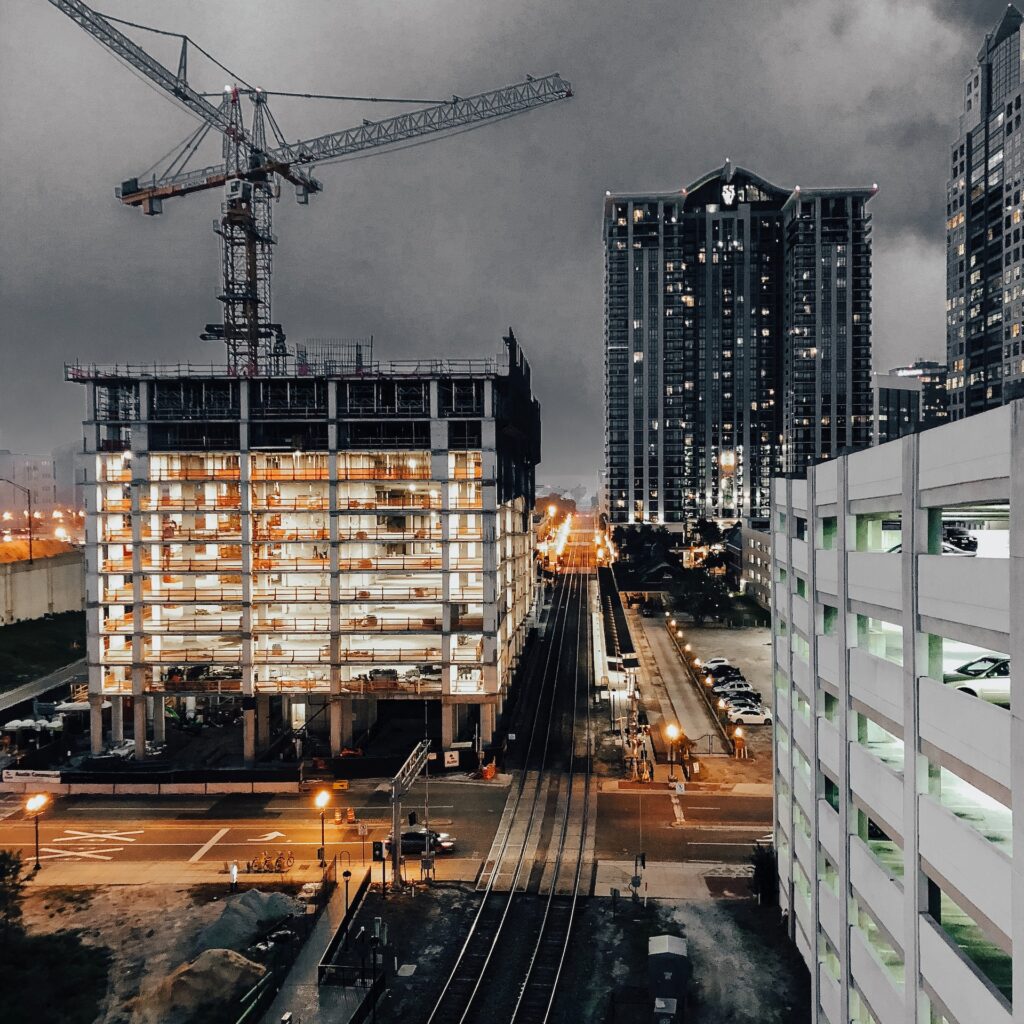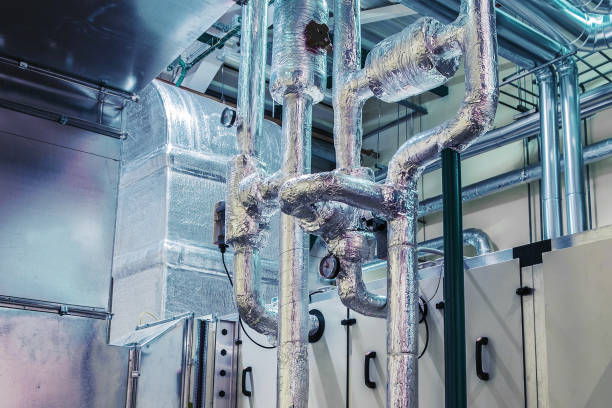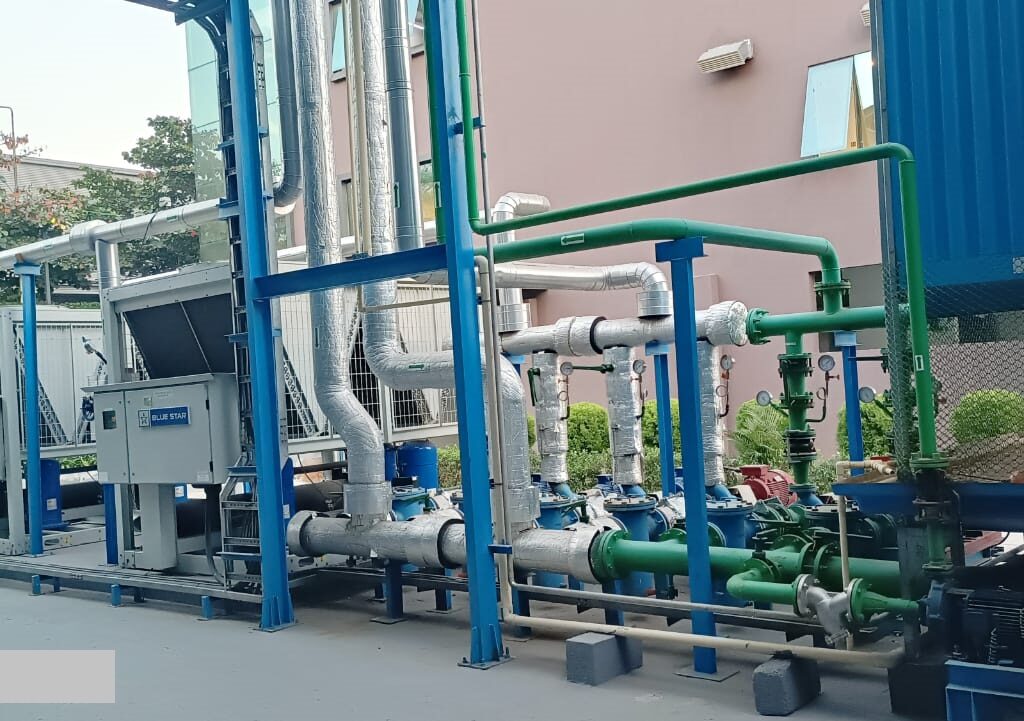MEP Systems

WHAT IS A MEP SYSTEM?
MEP stands for Mechanical, Electrical, and Plumbing engineering.
It’s a specialized discipline within the field of engineering that focuses on the design, construction, and maintenance of building systems. Here’s a brief overview of each component:
- Mechanical Engineering: In MEP, mechanical engineering deals with the design and Construction of heating, ventilation, and air conditioning (HVAC) systems. This includes ensuring proper airflow, temperature & humidity control, and energy efficiency within a building/lab/facility.
- Electrical Engineering: This aspect involves the design and installation of electrical systems within a building, including power distribution, lighting, communication, security, and fire detection systems. Electrical engineers ensure the safe and efficient supply of electricity throughout the building.
- Plumbing Engineering: Plumbing engineering involves the design and installation of plumbing systems, such as water supply, drainage, and gas supply systems. Plumbing engineers ensure proper water flow, waste removal, and gas distribution within a building while adhering to safety and environmental standards.
MEP engineers work collaboratively to ensure that these systems function efficiently and safely within a building. They consider factors like sustainability, energy efficiency, safety regulations, and client needs when designing and implementing these systems.
MEP engineers often work closely with architects, structural engineers, and other professionals involved in the construction and maintenance of buildings to ensure that all systems integrate seamlessly and meet the needs of the occupants.
WHY IS MEP SYSTEM IMPORTANT IN CONSTRUCTION
MEP (Mechanical, Electrical, and Plumbing) systems are crucial components in construction for several reasons:
Functionality and Comfort: MEP systems ensure that buildings are equipped with the necessary infrastructure for heating, ventilation, air conditioning (HVAC), lighting, water supply, and waste removal. These systems are essential for maintaining comfortable and functional indoor environments for occupants.
Safety: Properly designed and installed MEP systems contribute to the safety of buildings and their occupants. Electrical systems must meet stringent safety standards to prevent hazards such as electrical shocks and fires. Plumbing systems need to be designed to prevent water leaks, which can lead to structural damage and mold growth. HVAC systems play a role in maintaining indoor air quality, which is vital for occupant health and comfort.
Energy Efficiency: MEP systems can significantly impact a building’s energy consumption. Energy-efficient HVAC systems, lighting fixtures, and water heaters can reduce energy costs and environmental impact. Proper design and installation of MEP systems can incorporate energy-saving technologies such as insulation, efficient appliances, and renewable energy sources.
Space Utilization: MEP systems are often integrated into the structural design of buildings, influencing space utilization and layout. Proper coordination of MEP components during the design phase ensures efficient use of space and minimizes conflicts between different systems.
Building Regulations and Codes: MEP systems must comply with building codes and regulations to ensure the safety, health, and welfare of building occupants. Compliance with these standards is mandatory for obtaining permits and approvals for construction projects.
Lifecycle Costs: While the initial cost of installing MEP systems can be significant, they contribute to the long-term value of buildings by ensuring efficient operation and minimizing maintenance and repair costs over their lifecycle.
In summary, MEP systems are essential in construction because they provide the infrastructure necessary for functional, safe, energy-efficient, and compliant buildings. They contribute to occupant comfort, safety, and well-being while also impacting operational costs and environmental sustainability.


HOW TO GET THE RIGHT MEP SYSTEM FOR MY PROJECT?
Getting the right MEP (Mechanical, Electrical, and Plumbing) system for your project involves several steps:
Define Project Requirements: Clearly define the requirements and objectives of your project. Consider factors such as building size, occupancy type, budget, energy efficiency goals, sustainability targets, and local building codes and regulations.
Engage with a Professional MEP Engineer: Hire a qualified MEP engineer or consulting firm with expertise in designing MEP systems for projects similar to yours. They will work closely with you to understand your requirements, assess site conditions, and develop a customized MEP design that meets your needs and complies with applicable codes and standards.
Collaborative Design Process: Foster open communication and collaboration between all project stakeholders, including architects, engineers, contractors, and clients. Ensure that MEP considerations are integrated into the overall building design from the early stages to avoid conflicts and optimize system performance.
Consider Energy Efficiency and Sustainability: Incorporate energy-efficient and sustainable design principles into your MEP system. Explore options such as high-efficiency HVAC equipment, energy recovery systems, renewable energy sources (solar, geothermal), efficient lighting fixtures, water-saving plumbing fixtures, and building automation and controls.
Evaluate System Options: Work with your MEP engineer to evaluate different system options based on factors such as initial cost, lifecycle cost, energy efficiency, reliability, maintenance requirements, and compatibility with your project goals. Consider conducting energy modeling and life cycle cost analysis to compare the performance and cost-effectiveness of various options.
Coordinate with Other Trades: Ensure coordination between MEP systems and other building components, such as structural elements, architectural features, and interior finishes. Conduct regular coordination meetings and utilize Building Information Modeling (BIM) technology to identify and resolve potential clashes or conflicts between different systems.
Procurement and Installation: Once the MEP design is finalized, proceed with procuring the necessary equipment, materials, and labor for installation. Select reputable suppliers and contractors with experience in delivering quality MEP systems. Supervise the installation process to ensure compliance with design specifications, quality standards, and safety regulations.
Commissioning and Testing: After installation, commission and test the MEP systems to verify proper operation, performance, and compliance with design requirements. Conduct functional performance tests, air and water balancing, and quality assurance checks to identify and rectify any issues or deficiencies.
Training and Handover: Provide training to building operators and maintenance staff on how to operate, maintain, and troubleshoot the MEP systems effectively. Ensure that comprehensive operation and maintenance manuals, as-built drawings, and warranties are provided as part of the project handover process.
Post-Occupancy Evaluation: Monitor the performance of the MEP systems after occupancy to identify opportunities for optimization, energy savings, and ongoing maintenance. Implement preventive maintenance programs and periodic inspections to ensure the long-term reliability and efficiency of the systems.
By following these steps and working closely with experienced professionals, you can ensure that you get the right MEP system for your project, meeting your objectives for functionality, efficiency, sustainability, and compliance.
